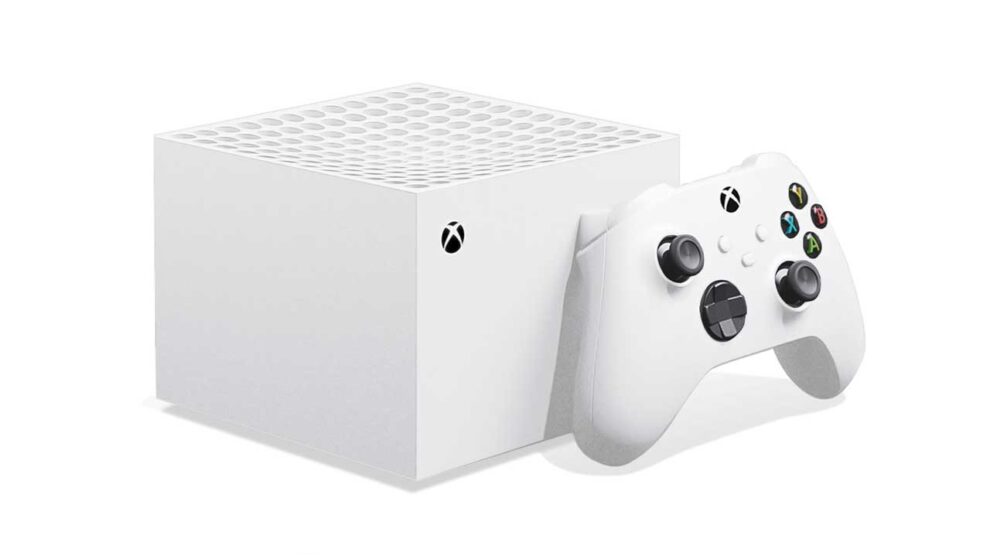In the ever-evolving world of gaming, companies are constantly exploring new ways to bring their content to players. Microsoft, with its popular Xbox Game Pass service, had been working on a dedicated streaming device codenamed “Keystone.” While this device never made it to production, a recent patent filing has given us a tantalizing glimpse of what might have been. Let’s dive into what we know about Keystone and what it could have meant for the future of game streaming.

The Vision Behind Keystone
Keystone was conceived as a dedicated streaming device for Xbox Game Pass, Microsoft’s subscription-based gaming service. The core idea was simple yet revolutionary:
- Allow users to play Xbox games on their TVs without needing an actual Xbox console
- Provide a more affordable entry point into the Xbox ecosystem
- Expand the reach of Xbox Game Pass to a wider audience
This approach aligns with Microsoft’s broader strategy of focusing on services and reaching gamers wherever they are, rather than solely relying on traditional console hardware sales.
The Design: Compact and Functional
While Keystone never reached production, the patent filing gives us some insights into its potential design:
Form Factor
- Small, square box design
- Circular design element on the top surface
- Compact enough to fit easily into most entertainment centers
Front Panel Features
- Likely included an Xbox power button for easy access
- USB-A port, potentially for connecting external storage or accessories
Rear Connectivity
- Expected to have standard ports like HDMI for TV connection
- Ethernet port for stable internet connectivity
- Power input for the device
Additional Design Elements
- Possible inclusion of a controller pairing button on the side
- Minimalist design aesthetic in line with recent Xbox hardware
This design approach suggests that Microsoft was aiming for a device that would blend seamlessly into users’ existing entertainment setups while providing easy access to Xbox Game Pass content.
Why Keystone Was Cancelled
Despite the promising concept, Microsoft ultimately decided to shelve the Keystone project. The primary reason cited was the inability to bring the manufacturing cost down to a competitive price point. This highlights some of the challenges in creating dedicated streaming hardware:
- Balancing performance requirements with cost constraints
- Competing with existing multi-purpose devices like smart TVs and streaming sticks
- Ensuring a high-quality gaming experience on lower-cost hardware
Microsoft’s decision to cancel Keystone suggests that they weren’t willing to compromise on the gaming experience or release a product that might not provide sufficient value to consumers.
The Future of Xbox Game Streaming
While Keystone may not have made it to market, its conception reveals much about Microsoft’s vision for the future of gaming. The company continues to push forward with its game streaming ambitions through other avenues:
Smart TV Integration
Rather than creating dedicated hardware, Microsoft is partnering with smart TV manufacturers to integrate Xbox Game Pass directly into televisions. This approach eliminates the need for additional hardware while still achieving the goal of making Xbox games more accessible.
Xbox Cloud Gaming
Microsoft’s cloud gaming service, part of Xbox Game Pass Ultimate, allows subscribers to stream games to a variety of devices, including smartphones, tablets, and web browsers. This multi-platform approach aligns with Microsoft’s goal of reaching gamers wherever they are.
Continued Console Development
While exploring streaming options, Microsoft remains committed to traditional console hardware with its Xbox Series X and Series S. These consoles cater to gamers who prefer local hardware and the highest performance.
What Keystone Tells Us About the Gaming Industry
The development and subsequent cancellation of Keystone offer several insights into the current state and future direction of the gaming industry:
1. The Push for Accessibility
Major gaming companies are actively seeking ways to lower the barriers to entry for their ecosystems. Streaming devices and services are seen as a key way to reach new audiences who might be hesitant to invest in expensive console hardware.
2. The Importance of Price Point
Even for a company with the resources of Microsoft, finding the right balance between features and cost remains a significant challenge. This highlights the competitive nature of the consumer electronics market and the slim margins often involved.
3. The Convergence of Gaming and General Entertainment
The design and intended functionality of Keystone blur the lines between gaming devices and general entertainment streaming boxes. This convergence is likely to continue as gaming becomes an increasingly mainstream form of entertainment.
4. The Role of Cloud Gaming
While dedicated streaming hardware like Keystone may not have materialized, the underlying technology and infrastructure for cloud gaming continue to evolve. This suggests that game streaming will play a significant role in the future of the industry, even if the exact form it takes is still being determined.
Conclusion: A Glimpse of Gaming’s Future
Although Keystone never made it to production, its development offers a fascinating look at the potential future of gaming hardware and services. Microsoft’s willingness to explore new form factors and delivery methods for games demonstrates the company’s commitment to innovation in the gaming space.
As technology continues to evolve and internet infrastructure improves, we’re likely to see more attempts to bridge the gap between traditional console gaming and more accessible streaming options. While Keystone may have been ahead of its time, the concepts it embodied are sure to resurface in future products and services.
For gamers and industry observers alike, projects like Keystone serve as an exciting reminder that the future of gaming is still being written. As companies continue to push the boundaries of what’s possible, we can look forward to new and innovative ways to play our favorite games.










Add Comment